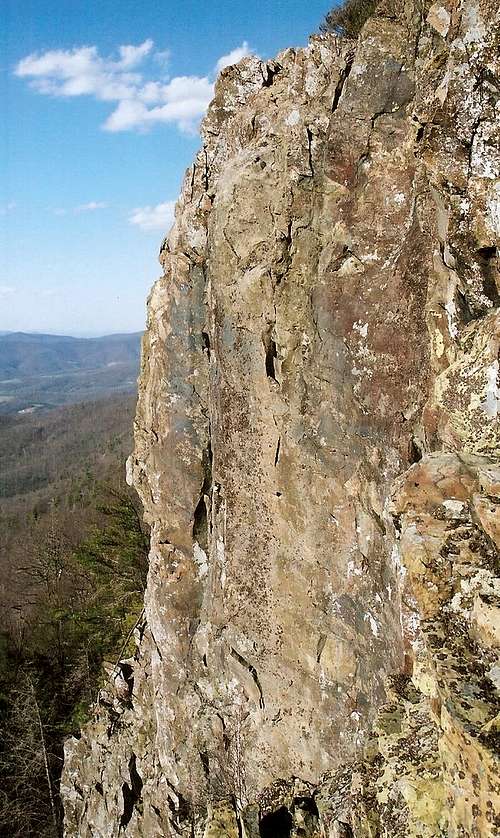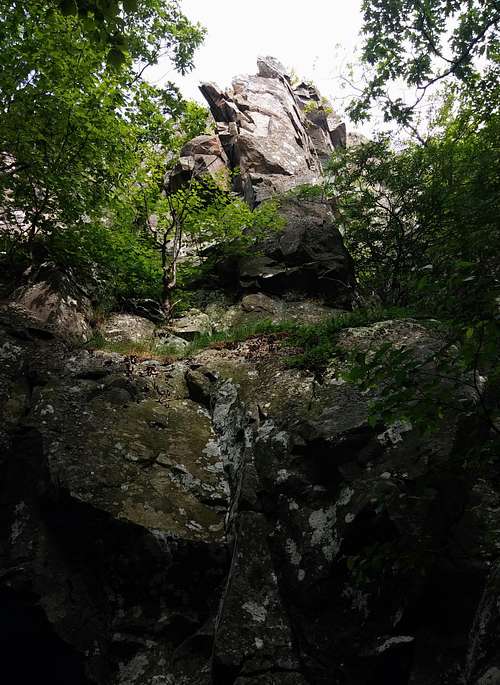-
 1865 Hits
1865 Hits
-
 72.08% Score
72.08% Score
-
 2 Votes
2 Votes
|
|
Mountain/Rock |
|---|---|
|
|
38.60340°N / 78.3683°W |
|
|
Madison, Page |
|
|
Trad Climbing, Toprope |
|
|
Spring, Summer, Fall, Winter |
|
|
3394 ft / 1034 m |
|
|
Overview
Getting There
The Little Stony Man parking area is in the park’s Central District at MP 39 on Skyline Drive. If entering the park at the Front Royal or Thornton Gap entrance, drive south. If entering at Rockfish Gap or Swift Run Gap, drive north. Note that there is an entrance fee for Skyline Drive. In 2015, it was either $15 or $20. To get directly to the base of the cliffs, hike on the AT to the junction with the Passamaquoddy Trail, which leads to a ledge offering a great view of the cliffs and then turns left to run directly beneath the cliffs. Note-- Some boulders and outcrops near the northern end offer interesting bouldering and scrambling, and I have, in fact, done some bouldering there, but current management plans have made for the closure of this area to human activity. This page's routes are at the southern end of the cliffs, just north of an obvious feature called The Chute.
Route Description
There are two established trad routes here:- Banana (5.2)-- This one starts around the right corner of the arête and then zig-zags around the difficulties of the direct climb. I have not led this one but did scramble it years ago, thinking at the time that it felt in that Class 4-5.2 range.
- Orange (5.6)-- A pretty fun lead. Starting on the right side of the arête is easier; starting left or directly below is harder and does offer a gear placement, but it is probably not high enough to avoid a ground fall. Above the start, follow the broken arête up to the top. There are some great gear placements along the way, but there is also some really bad rock. Use great caution here despite the rating. For a slightly harder variation, maybe 5.6+ or 5.7, go up the right side; there is still good pro, but the moves are a little harder and more exposed.



